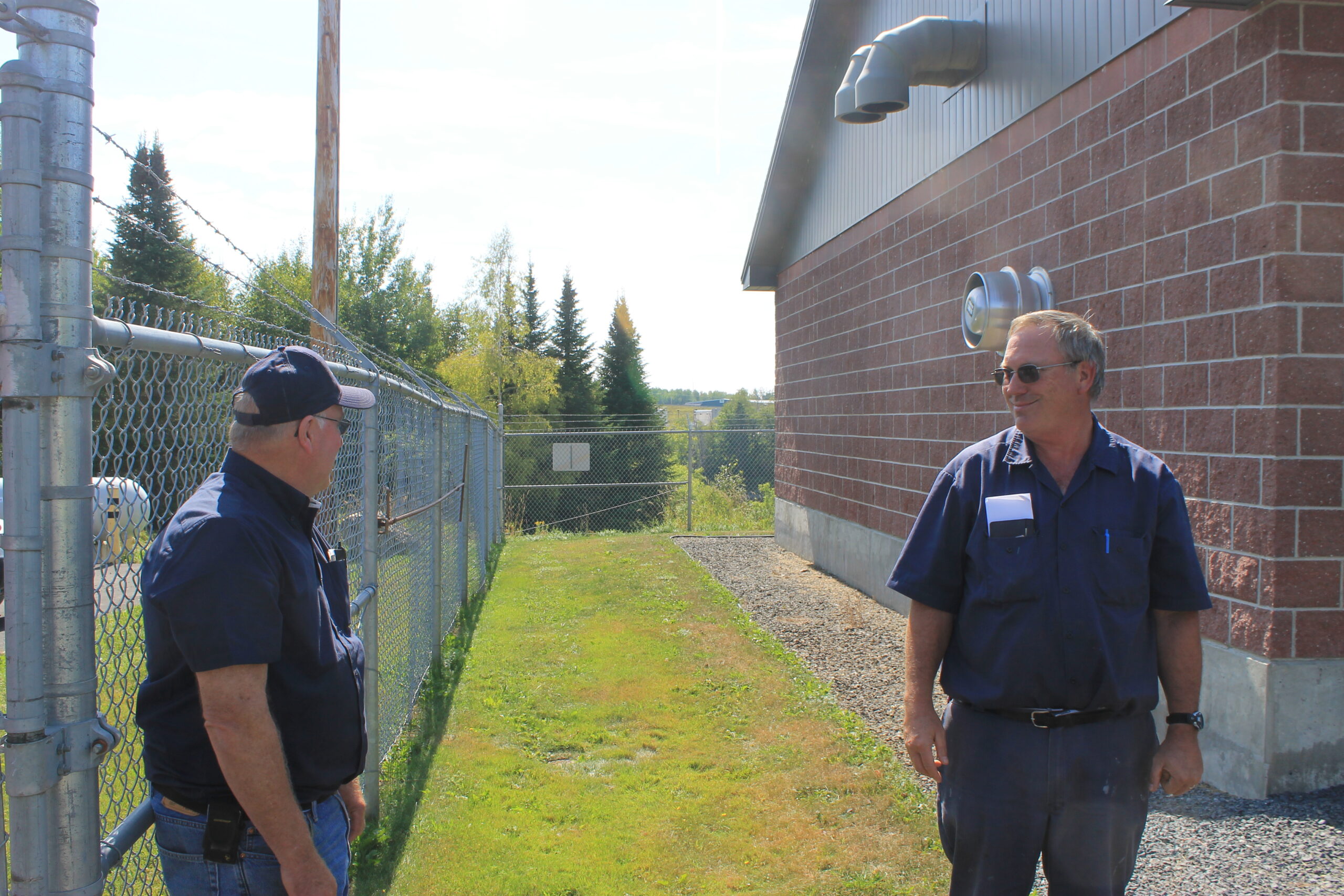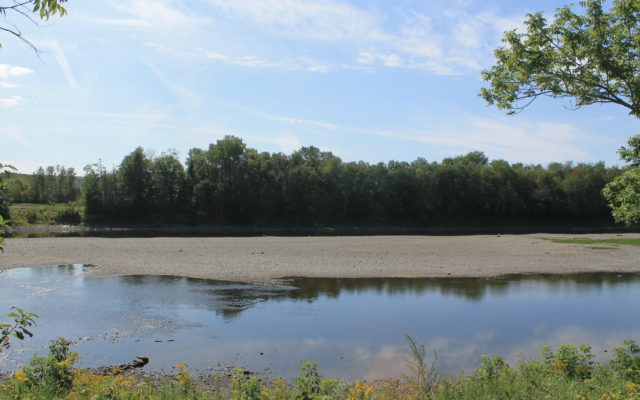
PRESQUE ISLE, Maine — Nearing the end of one of the driest summers in recent memory in Aroostook County, Frank Kearney is hoping for rain soon.
Were he still farming potatoes, Kearney knows it’d be too late for any rains to help the size of the tubers. But in his second career as a water utilities manager, almost all rain is welcome.
“We usually see the tip of that in the driest part of the year,” Kearney said recently, pointing to a large exposed gravel bar in the middle of the Aroostook River. The river feeds the Presque Isle Utilities District’s hybrid-groundwater wells that supply drinking water to almost 6,000 people.
“Our wells are at the same level as the river is. When the water’s gone out of the river, we’re out of water,” said Kearney, who’s been the district’s superintendent for the last two years.
“We’ve never seen the water this low. We could start having to save water.”
As of Aug. 22, the U.S. Drought Monitor showed most of Aroostook County classified as “abnormally dry” with parts of central and southern Aroostook joining Down East, the midcoast area and parts of southern Maine in a state of “moderate drought.”
Kearney and others with the Presque Isle Utilities District keep a watchful eye on the river and river flow observations from the National Weather Service’s Northeast River Forecasting Center, which maintains a gauge upriver in Washburn.
“The river is flowing at less than 200 cubic feet a minute,” Kearney said. “The average should be over 500 cubic feet per minute.”
The Presque Isle Utilities District started using the river-fed wells in the early 2000s, after long using surface water from Presque Isle Stream, which was unreliable as a source of a clean drinking water.
- The Aroostook River is running low this summer, exposing gravel bars like this one near the river-fed wells that supply drinking water to more than 5,000 people in Presque Isle. (Anthony Brino)
The river-fed wells have worked well overall as a source of water that meets public health requirements, said Kearney, who previously worked for water districts in Old Town, Mars Hill and Blaine.
But they are more subject to the river’s influence than engineers believed at the time, he said.
The Utilities District currently pumps 600 gallons a minute to meet the demand from its network, but it’s possible that the wells could not draw enough to meet that if the river runs even drier, Kearney said.
“If it gets to that point, hopefully people will slow down their water use, stop washing their cars, watering lawns and filling swimming pools.”
The flip side of dry spells and droughts is that there are fewer chances for erosion and runoff, as Maine water scientists found during last year’s drought.
“The water quality is still doing good,” Kearney said of Presque Isle’s drinking water.
It’s also not typical for water utilities in the water-rich Northeast U.S. to ask their customers to scale back. Most of the costs for maintenance and replacement of often-aging water infrastructure is paid for by ratepayers.
“It’s a two-edged sword,” said Fred Grooms, a treatment plant operator at the Presque Isle Utilities District.
“We want people to use the water so we can cover our costs, but we’re also to the point now where we need to conserve it.”





